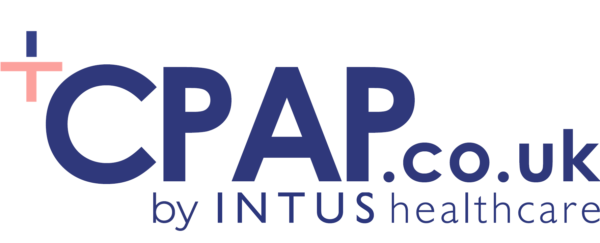Last updated on October 5th, 2023 at 11:11 am
Obesity has been linked to Sleep Apnoea for some time, but new research points to a link between tongue fat and sleep disorders.
Obesity is a significant contributing factor to Obstructive Sleep Apnoea (OSA), which, left untreated, can lead to serious health issues such as heart disease, high blood pressure, stroke, and type 2 diabetes.
Tongue Fat and Sleep Apnoea
Previously, the focus on the link between weight and sleep apnoea was centred on someone having a fat neck.
A study at the University of Pennsylvania goes against the above statement. An estimated 60% of Sleep Apnoea patients’ tongue is recognised as a main contributor to their Sleep Apnoea.
Weight gain can lead to fat forming on the tongue.
The study involved 67 patients with mild to severe OSA. MRI scans were taken of their throats and abdomens before and after 6 months of weight loss.
While the patients showed an overall 31% improvement in their Sleep Apnoea condition, the researchers looked closer at their findings to see where the main benefits arose. They looked at the changes in overall weight, comparing them to changes in the upper airways.
The researchers concluded the reduction in tongue fat was the most significant factor in reducing a patient’s OSA symptoms, such as heavy snoring.
Other muscles, including those on the side of the airways and in the jaw – also saw a reduction in size from weight loss. However, they did not have as significant an impact on relieving a sufferer’s Sleep Apnoea symptoms as the reduction in tongue fat.
This research backs up and offers insight into a previous study in 2014, which showed those who were obese and suffered from Sleep Apnoea had larger tongues than those who did not have the sleep disorder.
The Significance of this Research
In the future, this research could offer new ways of looking for Sleep Apnoea and reducing the symptoms.
The researchers are now keen to see if there is a specific low-fat diet which can aid in tongue fat reduction (read more on the foods that affect Sleep Apnoea here). Another channel of research could be whether the cold therapies currently used to break down stomach fat using freezing temperatures could be applied to tongue fat.
As it stands, to reduce the size of the tongue, you need to lose weight overall. As you can not “spot reduce” tongue fat.

Mouth & Tongue Exercises for Sleep Apnoea
This research into the role of the tongue and OSA also backs up a previously acknowledged way to ease symptoms of OSA, such as snoring.
In 2006 the British Medical Journal published the results of a study which concluded playing a wind instrument such as the didgeridoo strengthens the throat muscles and, over time, reduces the symptoms of Sleep Apnoea.
For those who may not have a didgeridoo to hand, other mouth and tongue exercises to strengthen the muscles could also be beneficial. These straightforward exercises are easy to do, such as pushing the tip of the tongue against the roof of the mouth before sliding the tongue back.
This can be done as 20 repetitions alongside one or two similar exercises, which you could discuss with your doctor.
Exercises for the mouth and tongue are called “myofunctional therapy” or “oropharyngeal exercises”. Research has found that conducting regular mouth and tongue exercises prevent your tongue from vibrating while you sleep – reducing snoring and milder Sleep Apnoea cases.
These exercises should be used in conjunction with Sleep Apnoea treatments, such as CPAP therapy.
How Often Should You Do Tongue Exercises for Sleep Apnoea?
To see results, complete mouth and tongue exercises daily for ten minutes.
Research has found that you will benefit from mouth and tongue exercises after three months.
Lifestyle Changes to Combat Sleep Apnoea
Obesity increases the risk of OSA, and weight loss remains important in reducing the disorder’s symptoms. Weight loss will also reduce tongue fat. To allow you to get good nights of restorative sleep.
Once diagnosed, recommended treatment plans for Sleep Apnoea will depend on the severity of an individual’s sleep disorder. These can include Mandibular Advancement Devices (oral appliances) worn overnight to keep the airways open.
CPAP therapy (Continuous Positive Airway Pressure) is the most common and effective way of treating Sleep Apnoea. The CPAP machine uses a supply stream of air via a CPAP mask as you sleep to keep your airways open.
However, as being overweight is often a contributing factor, your doctor will likely recommend lifestyle changes to reduce weight alongside any other treatment course.
This will include eating a healthier, more nutritional diet, exercising more, reducing alcohol consumption and quitting smoking.
Ensure the bedroom is optimised for sleep, including removing screens, making the room dark, and going to bed only when you are tired.
Other changes which can help include sleeping on your side as gravity can pull the muscles down into the throat when sleeping on your back. Positional therapy is a treatment for those who have positional Sleep Apnoea.
These are all modifications which can help you sleep and, along with lifestyle changes, can help you manage and even reduce your sleep apnoea symptoms.
If you think you have Sleep Apnoea and have not been diagnosed – take an In-Home Sleep Test. This is a quick and affordable way to find out if you have Sleep Apnoea.
The Bottom Line
More research is required, but studies mentioned shed more light on why weight plays a pivotal role in the disorder and why losing tongue fat improves Sleep Apnoea.
Contact us if you need any help or advice.



